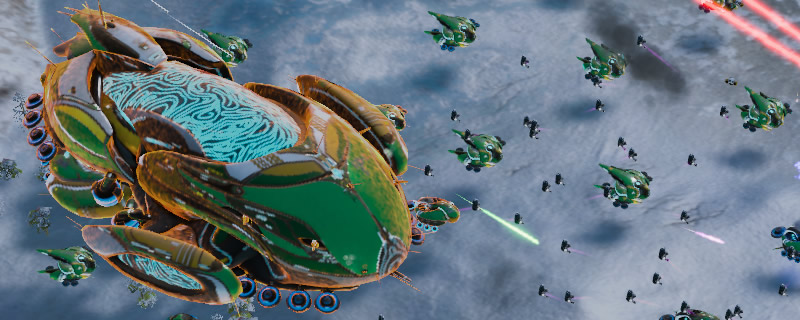Ashes of the Singularity Beta Phase 2 DirectX 12 Performance Review
Conclusion
With Ashes of the Singularity we learn two very important things, that AMD has a lot to gain from using DirectX 12 and that Nvidia in this game gains nothing.Â
Nvidia show here that that make great use of both DirectX 12 and Direct11, but their lack of Asynchronous Compute support in their current GPU drivers means that they have very little to gain on the GPU side. Ever since AMD announced Mantle Nvidia stated that they were working to reduce the CPU usage of their drivers to gain “Mantle like” benefits, resulting in them gaining very little from DirectX 12 in pretty much all cases.
AMD in this game has gained a tremendous amount of performance, with the game at Extreme settings at 1440p gaining an astounding 23% performance gain in their average framerate, giving their R9 Fury X much better performance than Nvidia’s GTX 980Ti. With full support for Asynchronous compute AMD have truly shown what it is to have mastered DirectX 12, gaining performance on both the CPU and GPU side, resulting in some massive performance gains.Â
In a lot of recent games we would see the R9 Fury X lag behind the GTX 980Ti at 1080p to then come into it’s own at the ultra high resolution of 4K, but in this game with DirectX 12 we can see that AMD has the ability to easily beat the GTX 980Ti at 1080p with their R9 Fury X, offering an average of 62.2 FPS at 1080p Extreme compared to the average of 56.7 FPS with the GTX 980Ti.Â
It seems that DirectX 12 has acted like a Rocky Style musical montage for AMD, where they took a while to lick their wounds and train in the basics to deliver an exciting comeback fight in 2016. The results for AMD here are nothing short of amazing, giving them a competitive edge right now in the battle of DirectX 12. Â
We must remember that this is a test for only one game, which is a game that is currently in beta, so these performance gains may not be representative of all DirectX 12 titles, especially if they do not use Asynchronous Compute.Â
One very strange discovery while testing DirectX 12 in this game was that the game used a lot more VRAM when using the DirectX 12 API, resulting in some cases where some of our GPUs did not have enough VRAM to play the game at the highest possible settings. In this title both AMD and Nvidia has higher VRAM usage in this title while using DirectX 12, but at this moment we do not know if other DirectX 12 titles will be affected. We will be looking into this with other DirectX 12 games in the future to see if this issue is game specific or not.Â
All in all Ashes of the Singularity shows us that DirectX 12 has a lot of potential for performance improvement, especially on AMD. Hopefully Nvidia can get Asynchronous Compute to work on their current or future GPUs, as an AMD it seems to be an extremely useful tool that offers a huge performance gain in GPU bound scenarios.Â
Ashes of the Singularity is a game that has the ability to scale very well with GPU power, being able to be tuned to offer high framerates or extremely high graphical quality with the change of a few settings. Never before have I seen so many units on a single screen, which is something as an RTS fan makes me tremendously excited to see everything that Oxide will be bringing us in the future with Ashes of the Singularity and their Nitrous Engine.Â
Â
This testing was conducted using the Beta II version of the game with the game’s benchmark version 2, which will be releases in the Early Access version of the game Tomorrow, February 25th.Â
We have also tested this game’s Explicit Multi-GPU functionality, but this has been left in a separate review, as here we wanted to focus on the Single-GPU benefits of DirectX 12 and so that we could better present all of our performance data. Â
Â
You can join the discussion on Ashes of the Singularity and the performance of DirectX 12 on the OC3D Forums.Â
Â
What performance gains do we get in the new DirectX 12 API in Ashes of the Singularityhttps://t.co/XqHphRNGUW pic.twitter.com/NLa19K7v2X
— OC3D (@OC3D) February 24, 2016



